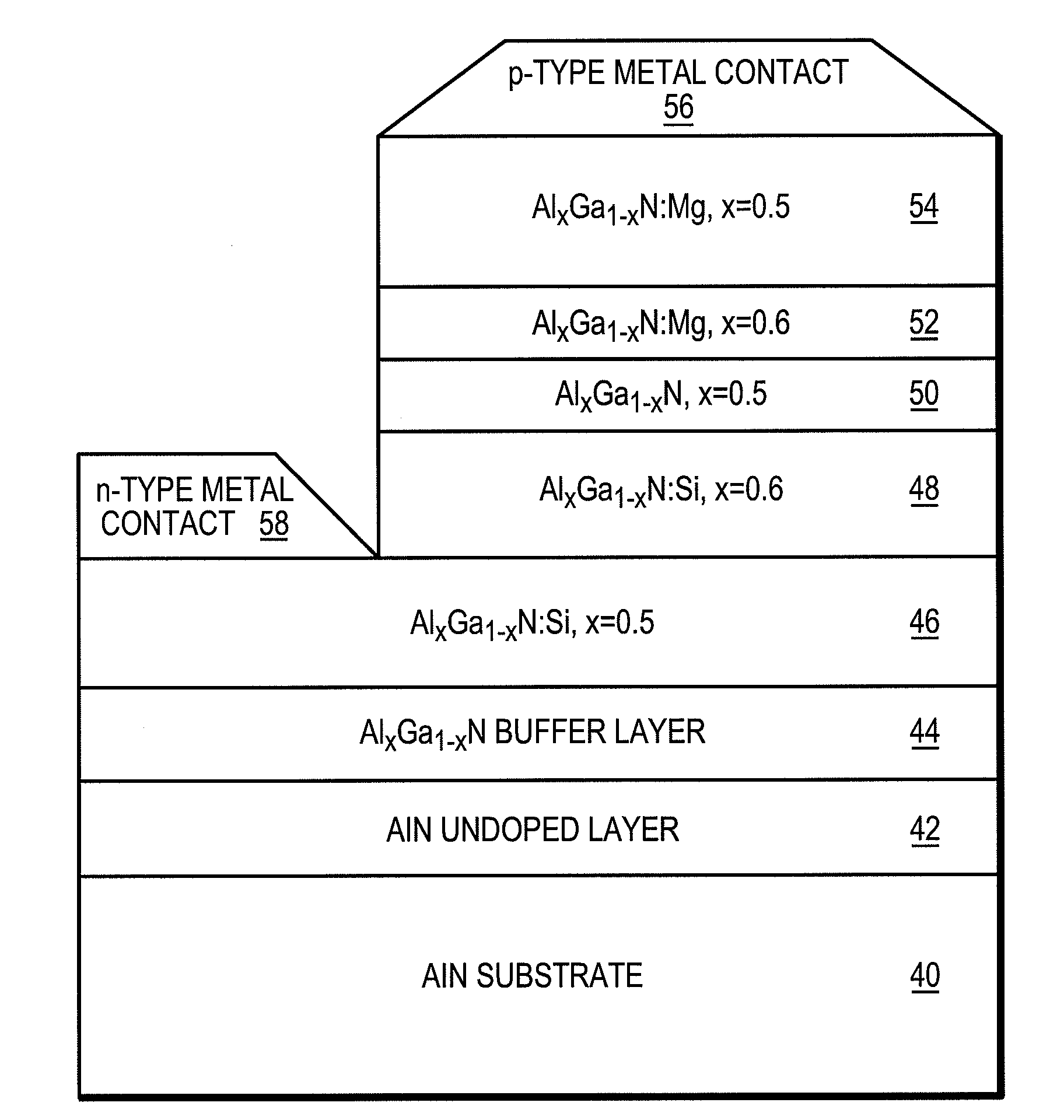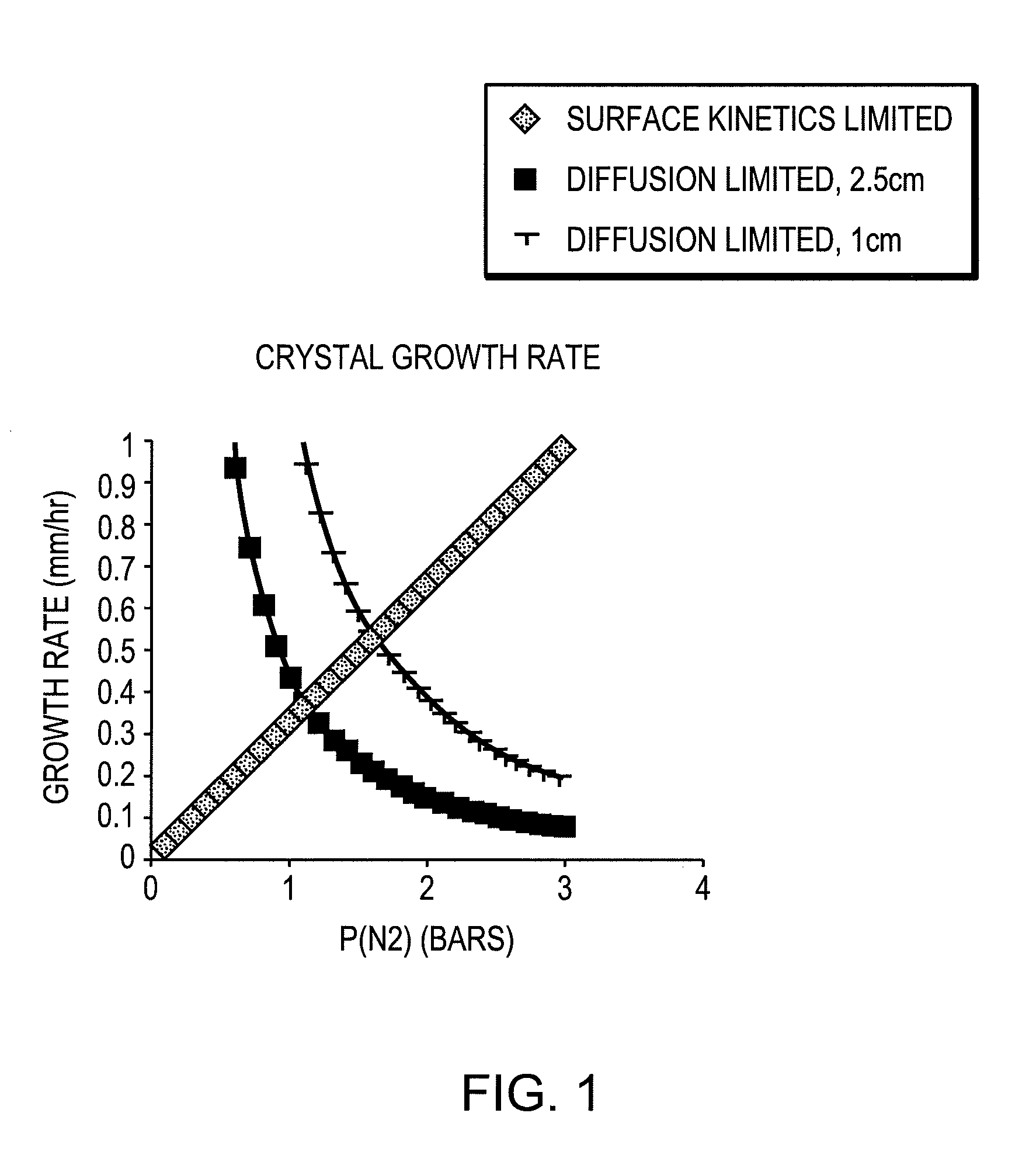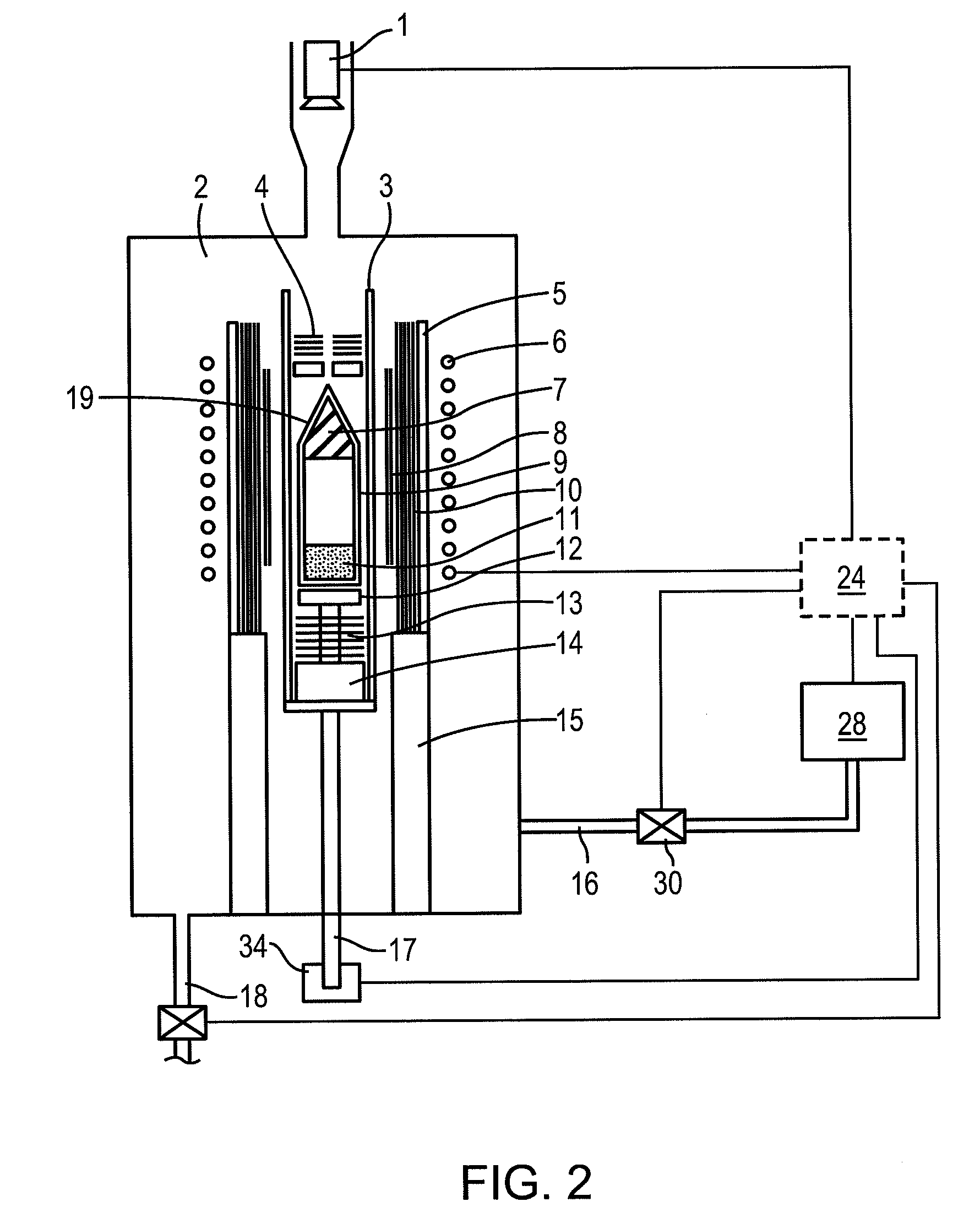Nitride semiconductor heterostructures and related methods
a technology of aluminum nitride and heterostructure, which is applied in the direction of crystal growth process, semiconductor laser, gel state, etc., can solve the problems of gan epitaxy cracking during post-fabrication cooling process, sapphire is far from being perfectly suited for gan epitaxy, and none of them appears to be commercially feasible to fabricate large-area bulk crystals of gan, etc., to achieve the effect of facilitating the fabrication of aln crystals
- Summary
- Abstract
- Description
- Claims
- Application Information
AI Technical Summary
Benefits of technology
Problems solved by technology
Method used
Image
Examples
example
260 nm Laser Diode Fabrication
[0091]FIG. 6 is a schematic cross-sectional view of a portion of a 260-nm laser diode fabricated using the method of the present invention. Initially, low defect density AlN substrate 40, which is prepared using the method discussed above, is polished by CMP. The polished substrate is then introduced into a conventional OMVPE system. The surface of the low defect density AlN substrate is cleaned to remove any oxide or other impurities on the crystal surface by heating the substrate at a temperature of 1150 ° C. for 20 min under ammonia plus nitrogen or hydrogen plus nitrogen flow prior to growth. An epitaxial layer 42 of AlN having a thickness of about 100 nm is then grown on the substrate to improve its surface quality before starting to grow the device layers. Next, an undoped AlxGa1−xN buffer layer 44 having a thickness of approximately 1 μm is grown atop the epitaxial AlN layer to relieve lattice mismatch through the formation of misfit dislocations...
PUM
 Login to View More
Login to View More Abstract
Description
Claims
Application Information
 Login to View More
Login to View More - R&D
- Intellectual Property
- Life Sciences
- Materials
- Tech Scout
- Unparalleled Data Quality
- Higher Quality Content
- 60% Fewer Hallucinations
Browse by: Latest US Patents, China's latest patents, Technical Efficacy Thesaurus, Application Domain, Technology Topic, Popular Technical Reports.
© 2025 PatSnap. All rights reserved.Legal|Privacy policy|Modern Slavery Act Transparency Statement|Sitemap|About US| Contact US: help@patsnap.com



